Know More about Miyagase Dam
-
Introducing Facilities Inside the Dam
Other facilities
Monitoring Corridors
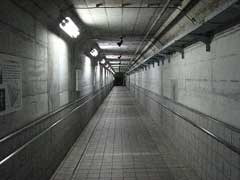
Monitoring corridors are installed inside the dam body for the purposes of conducting inspections and observations.
Hundreds of meters of corridors are present inside the giant dam and are equipped with gates, valves, pumps, measuring devices and monitoring cameras at key positions.
These corridors are used for inspecting and observing various control equipment and measurement devices to ensure that Miyagase Dam is managed and operated efficiently.Elevator
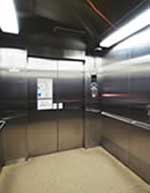
An elevator is installed inside the dam body for the purposes inspecting and exchanging equipment in discharge facilities and conducting maintenance work inside the dam. This elevator is also open to general visitors to the dam for the purpose of conducting tours and studying about the dam.
Plumb Lines
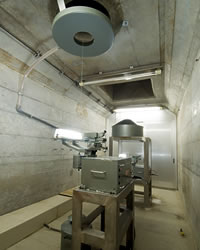 Normal plumb line lower level measurement room
Normal plumb line lower level measurement room
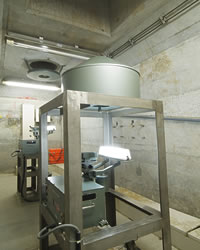 Reverse plumb line
Reverse plumb line
A plumb line is a device for checking on dam safety through measuring distortions that arise in the dam body due to water pressure, ground deformation and so on. The plumb lines comprise the normal plumb line and reverse plumb line.
[Normal plumb line]
Comprising a hanging plumb bob (weight of concrete or iron plate, etc.) fixed at the top with a pendulum device, this measures deflection based on the relative displacement of the top part and bottom part of the dam body.
Measurement points are located in the mid-level measurement room and lower level measurement room.Upper edge height: EL.290.00m
Bottom edge height: EL.155.25m
Length: Approx. 125m[Reverse plumb line]
Fixed to an immovable rock thought to have no bedrock deformation, the upper edge is pulled with a float device, and it measures horizontal displacement based on the relative displacement of the dam body base and bedrock. The reverse plumb line is installed directly underneath the normal plumb line.Upper edge height: EL.155.25m
Bottom edge height: EL.105.00m
Length: Approx. 50m* This is not open to the public.
Seismograph
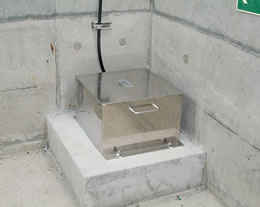
At Miyagase Dam, three seismographs are installed inside the dam body. These are measurement devices for ascertaining the scale of occurring earthquakes and obtaining basic data for conducting inspections.
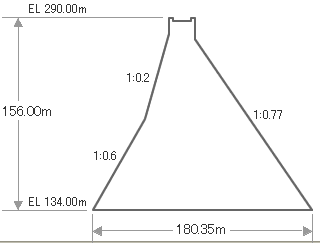
Aseismic Design of Miyagase Dam
Designed with the Great Kanto Earthquake in mind, Miyagase Dam has been constructed as a stable triangular shape with height of 156m and base width of 180m as a result of adopting seismic inertial force 1.2 times higher than the standard value. The resulting structure ensures that the dam will remain stable even if an earthquake of magnitude 8.0, exceeding the magnitude experienced in the Great Kanto Earthquake and Great Hanshin Earthquake, occurs in the vicinity of the dam body.Reference Values
[Scale of the Great Kanto Earthquake]
Magnitude 7.9 Epicenter: Sagami Bay
[Scale of the Great Hanshin Earthquake]
Magnitude 7.2 Epicenter: Northern part of Awaji Island* This is not open to the public.
Inspection Monorail
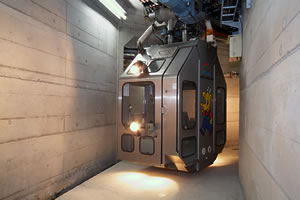
To ensure the safe management and operation of the dam, inspections must be conducted inside the dam body everyday.
However, since Miyagase Dam is a giant structure having a crest length of 375m and height of 156m, inspections require a lot of time and effort. To facilitate efficient implementation of inspections, a four-seater inspection monorail has been installed inside the dam body. Through using this monorail, staff members are able to carefully inspect inside the dam in spite of its great horizontal and vertical dimensions.
